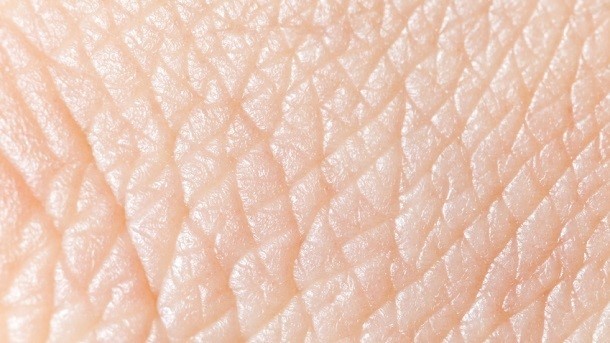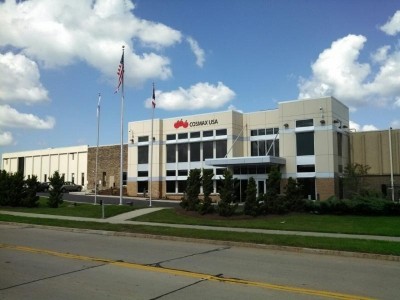Scientists develop inorganic IR blockers to help protect against skin ageing

The scientists, from the Cosmax Research & Innovation Centre, published their findings in the International Journal of Cosmetics Science, showing that these blockers were effective in reducing collagens in human dermal fibroblasts.
The focus of the study was the infrared radiation from the sun as this has been shown in previous studies to have a big effect on skin ageing, and similar to UV radiation, is involved in skin photo-ageing, as well as being a factor of thermal skin ageing.
IR radiation
IR radiation is a major factor in the generation of heat from sunrays, which increases the skin temperature during sun exposure, and it also typically induces molecular vibration and rotation, and so increases the temperature.
This increase in skin temperature after sun exposure is widely considered a major extracellular stimulus which can affect skin enzymes and lead to collagen deficiency and skin wrinkling.
Therefore, the research team looked at inorganic molecules known to have an IR-blocking effect that may be used for blocking heat transmission and developed a metal oxide-coating PMMA (P/M) or Talc (T/M) for use as a new IR blocker, which is targeted for cosmetics use, which is expected to protect against thermal injury by blocking IR radiation.
Effective
“In this study, we have investigated whether P/M or T/M inhibits IR-induced thermal ageing response in dermal fibroblasts,” says the research paper.
“Using P / M or M / T inhibited IR-induced Increases of MMP-1, MMP-3 and MMP-9, and IR-induced decreases of procollagen type 1 and 4 in a dose-dependent Manner in dermal fibroblasts. In addition, using Both P / M and T / M blocked the media Increase of cell temperature induced by IR lamp.”
The team also investigated whether the anti-ageing responses of P/M and T/M are related to the increase of temperature in IR-exposed fibroblasts, and found that the two blockers can inhibit thermal ageing in dermal fibroblasts by reflecting the transmission of IR-induced heat.



![Able C&C has furthered its partnership with Japanese discount chain Daiso with new makeup launch. [A'pieu]](/var/wrbm_gb_food_pharma/storage/images/_aliases/wrbm_tiny/publications/cosmetics/cosmeticsdesign-asia.com/headlines/brand-innovation/a-pieu-and-daiso-launch-exclusive-2-makeup-line/17339117-1-eng-GB/A-pieu-and-Daiso-launch-exclusive-2-makeup-line.jpg)
![Down Under Enterprises is setting sights on the Asian market as environmental sustainability and traceability become increasingly important. [Getty Images]](/var/wrbm_gb_food_pharma/storage/images/_aliases/wrbm_tiny/publications/cosmetics/cosmeticsdesign-asia.com/headlines/market-trends/down-under-enterprises-shifts-focus-to-china-as-environmental-sustainability-traceability-come-into-the-spotlight/17304932-1-eng-GB/Down-Under-Enterprises-shifts-focus-to-China-as-environmental-sustainability-traceability-come-into-the-spotlight.jpg)
![News updates from Shiseido, Dr.Ci:Labo, Sephora, and more. [Shiseido]](/var/wrbm_gb_food_pharma/storage/images/_aliases/wrbm_tiny/publications/cosmetics/cosmeticsdesign-asia.com/headlines/brand-innovation/updates-from-shiseido-dr.ci-labo-sephora-and-more/17334944-1-eng-GB/Updates-from-Shiseido-Dr.Ci-Labo-Sephora-and-more.jpg)

![Clariant has underscored the importance of localisation strategies and distribution capabilities in China with beauty trends evolving at a rapid pace. [Getty Images]](/var/wrbm_gb_food_pharma/storage/images/_aliases/wrbm_tiny/publications/cosmetics/cosmeticsdesign-asia.com/article/2024/04/16/clariant-emphasises-importance-of-localisation-in-the-era-of-viral-trends/17327969-1-eng-GB/Clariant-emphasises-importance-of-localisation-in-the-era-of-viral-trends.jpg)

![We dive into our most-read stories on formulation and science. [Getty Images]](/var/wrbm_gb_food_pharma/storage/images/_aliases/wrbm_tiny/publications/cosmetics/cosmeticsdesign-asia.com/headlines/formulation-science/skin-science-latest-stories-on-cosmetics-science-and-formulation/17334719-1-eng-GB/Skin-science-Latest-stories-on-cosmetics-science-and-formulation.jpg)